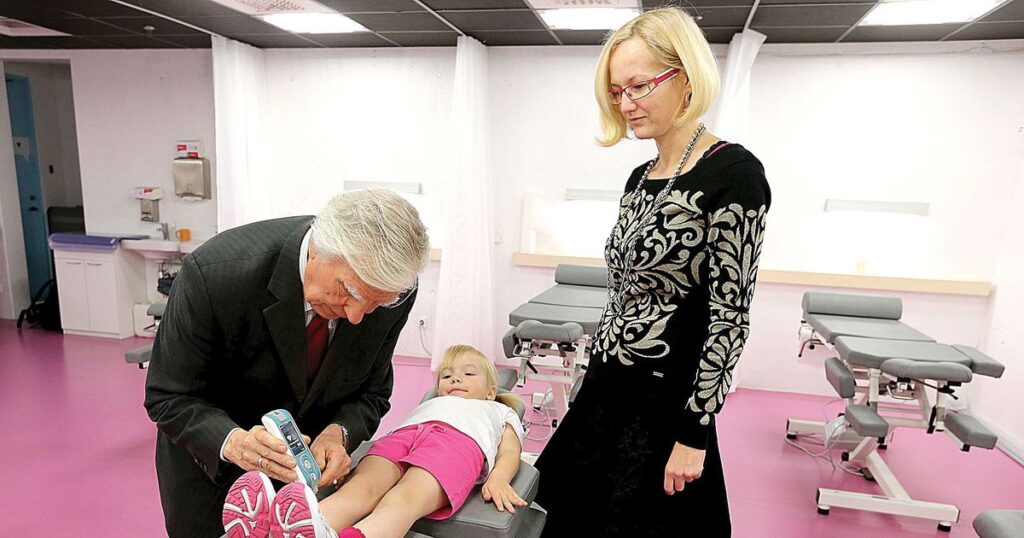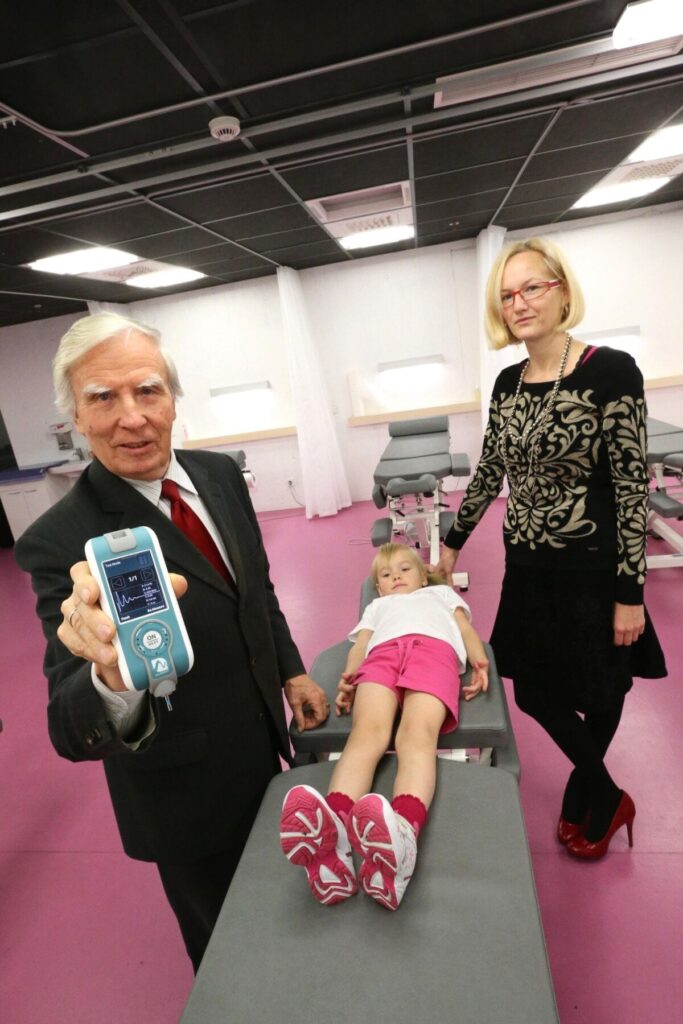The invention is related to a device for the mechanotherapeutic stimulation of the human body and to a method of measuring the pressure applied to the human body.
The invention belongs to the field of medical equipment and is intended to be useful in guiding the process of the mechanotherapeutic correction of the position of various body parts and in statistically evaluating the effectiveness of correction procedures.Personalised medicine has become increasingly important in healthcare. This is supported by the rapid development of information technology. New methods and devices are used that make it possible to apply the principles of evidence-based medicine.
Genu valgum is expressed in changes in the angle between the longitudinal axis of the tibia and the femur and the shape of the biomechanical axis of the lower limb, the tension of the muscles extending across the knee joint and medial collateral ligament and the compression of lateral joint surfaces. Until now, there have been no equipment or methods to guide and evaluate mechanotherapeutic intervention so that timely decisions can be made on the effectiveness of the intervention.
It is possible to use the device and method to estimate the effect of a mechanotherapeutic stimulus for several types of conditions where muscle tone is causing the incorrect posture of the body or limb, for example, where a biomechanical axis is not correct due to a misbalance in the moment of force in a joint.
A wireless pressure sensor weighing 9 grams and measuring 30 x 50 x 6 millimetres is installed above the knee joint in a closable pocket, which is located at the medial portion of the garment. The pressure sensor signal can be monitored online via a smartphone application while wearing the garment or selecting and adjusting the desired range of pressure values.

The graph of stimulus values can be analysed on a computer based on a median calculated by the sensor processor every minute and sent to a cloud server every five minutes. The medians of the results are displayed on the cloud server for each of the last 15 minutes.
The development of the GV Correct therapeutic garment began in 2012, when Professor Arved Vain from the University of Tartu wanted to work out a non-invasive solution based on mechanotherapy in order to correct the alignment of the lower limbs in children with knock knees.
So far, treating knock knees has been an unresolved issue. In collaboration with the University of Tartu and Tartu Health Care College, and with support from the private sector, development of the product began.
By 2021, several applied research projects have been carried out, both the software and hardware of the devices have been upgraded (including full transition to wireless data transmission), and the operational reliability, comfort and design of the garment have been improved.
The GV Correct corrective garment is a novel 21st century solution for the permanent correction of knock knees (genu valgum) in children. The garment is worn eight hours a day and, according to individual needs, each child is assigned an exercise plan that ensures the necessary muscle tone and permanent alignment of the corrected lower limbs.
Fig 1. Front view of the garment. 1 – garment; 2 – pressure sensor; 3 – inner strip of fabric with a higher coefficient of friction in the waist region of the garment; 4 – elastic straps; 5 – adjustment of the tension of the elastic straps; 6 – inner surface of the knee joint; 7 – spherical segment which must be in contact with the elastic strap; 8 – pressure sensor.
Fig 2. Rear view of the garment







